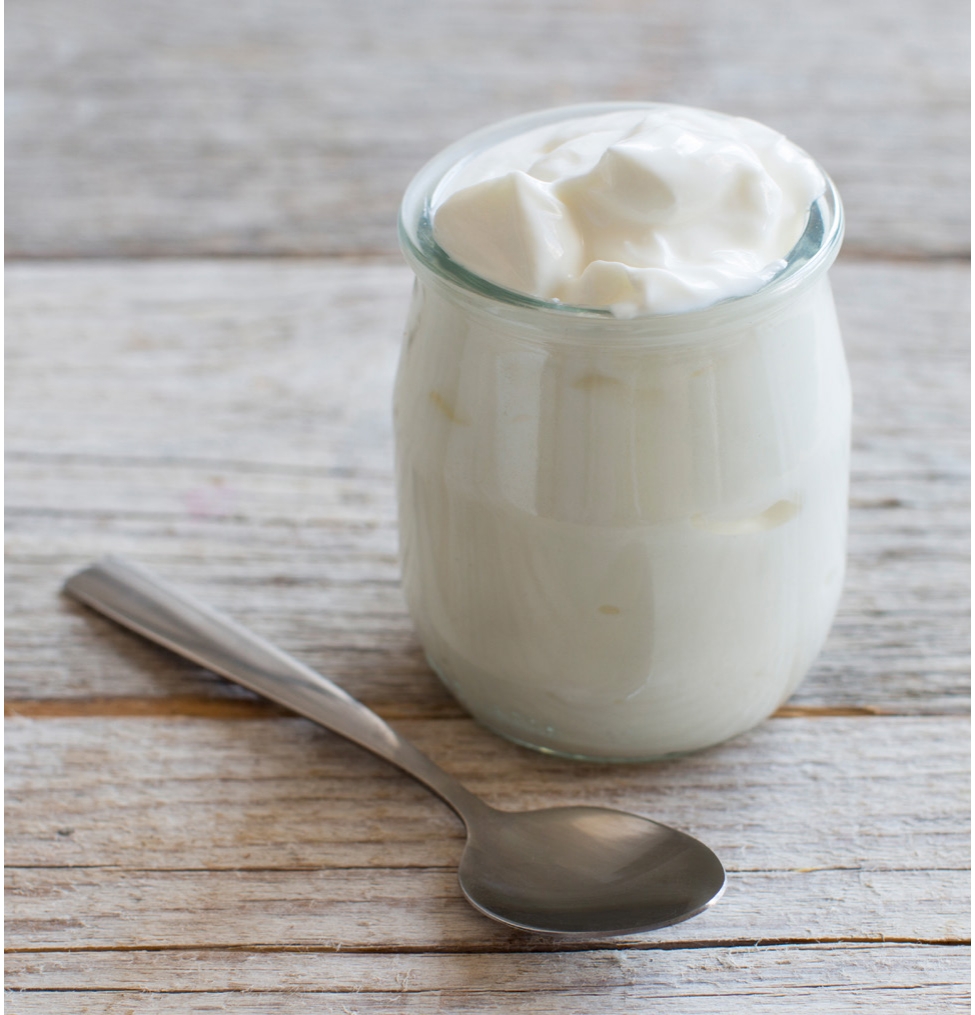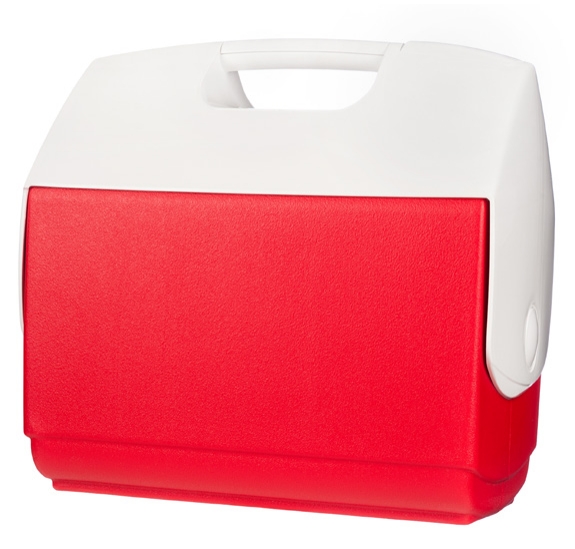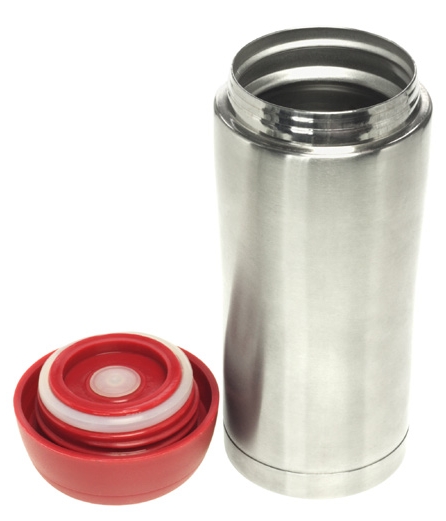Making Yogurt at Home
FNH-00062 View this publication in PDF form to print or download.
by Julie Cascio
Yogurt (also spelled yogourt or yoghurt) is a semi-solid fermented milk product that originated centuries ago and has evolved from many traditional Eastern European products. The word is from the Turkish yogen, meaning “thick.”
Yogurt is eaten all over the world. The partial digestion of the milk caused by the fermentation of the starter culture makes yogurt easily digested, even by people who cannot tolerate milk. When used in baking, yogurt produces a tender product. Yogurt is a rich source of protein and calcium, and the fermentation process makes these nutrients easier to absorb. Ongoing studies are revealing many health benefits to this great food, such as boosting immunity and reducing yeast infections and colon cancer.
For successful yogurt making, be sure to:
- Clean and sanitize. This includes using pasteurized milk, heating the milk, and cleaning and sanitizing containers and workspaces. This is all done to keep out unwanted bacteria.
- Maintain a moderate incubation temperature. Streptococcus thermophilus and Lactobacillus bulgaricus are thermophilic bacteria. They like warm temperatures, but they can be killed at temperatures above 130°F and will not grow well below 98°F.
- Protect the starter from contamination. Do not open the starter until time to make the next batch.

Ingredients
Yogurt can be made from the milk of various animals, including cow, goat and sheep. Cream, whole, low-fat, skim, nonfat, or rehydrated dry milk may be used.
Milk solids may be added to increase the nonfat solid content. This gives a firmer set to the yogurt. Nonfat dry milk powder works well.
Starter cultures: Streptococcus thermophilus and Lactobacillus bulgaricus are the cultures most often used to make yogurt. Dry cultures may be purchased in health food stores or on the Internet. Or, plain yogurt with live and active cultures may be purchased from a local store. Check the label to see that the product contains live cultures.
To maintain a culture, save a small portion of yogurt (1 cup for a 1-gallon batch, ¼ cup for a 1-quart batch) to use as a starter culture for the next batch. Place this in a clean, airtight container and store in the refrigerator, sealed, until you are ready to use it.
Optional additions may be sweeteners such as sugar, honey or artificial sweeteners; fruit or other flavorings; gelatin for thickening.
Equipment
Double boiler or regular saucepan: The pan needs to be large enough to hold all the liquid, plus have room to stir without the liquid going over the edge. Thermometer: Accurate temperature control helps assure rapid coagulation and a good-tasting yogurt. Use a thermometer that measures temperature in the range of 0°-220°F and can be calibrated for accuracy.
Containers for the yogurt: For example, 8-ounce canning jars with lids. Clean in hot soapy water, rinse well, then sterilize by heating in boiling water for 10 minutes. Air dry.
Measuring cups and spoons, mixing spoons and small bowl for mixing starter with a small amount of warm yogurt: Before using, clean, rinse, sterilize and air dry to reduce possible bacterial contamination.
Incubator: A yogurt maker, insulated cooler, thermos, oven or heating pad that will maintain a temperature of 110°F for several hours may be used as an incubator.
- To use a yogurt maker, follow manufacturer’s directions.
- To use an oven, place filled yogurt containers into deep pans of 110°F water. Water should come at least halfway up the containers. Set oven temperature at its lowest point to maintain water temperature at 110°F. Monitor temperature throughout incubation, making adjustments as necessary.

- To use an insulated cooler, prewarm the cooler with almost-boiling water. Empty, then
fill
 with 110°F water that comes halfway up the sides of jars filled with 110°F cultured
milk. Place lid on cooler and let set.
with 110°F water that comes halfway up the sides of jars filled with 110°F cultured
milk. Place lid on cooler and let set. - To use a thermos, prewarm a clean thermos with boiling water. Empty water and pour in cultured milk that has been heated to 110°-115°F. Add lid and let set.
Food Safety
Both heat and acidity are necessary to ensure a safe product. Always pasteurize raw milk or use commercially pasteurized milk to make yogurt.
Discard any yogurt samples with visible signs of microbial growth or any odors other than the acidic smell of fresh yogurt. Discard batches that fail to set properly since this may be an indication of a bad culture or unwanted microorganisms.
Always use clean and sanitized equipment and containers to ensure a long shelf life for your yogurt. Clean equipment and containers in hot detergent water, then rinse well and air dry.
Ingredients added to yogurt should be clean and of good quality so they do not add undesirable microorganisms to the yogurt.
Recipe
| Yogurt Recipe (1 quart) | Yogurt Recipe, nonfat (1 quart) | Yogurt Recipe (1 gallon) |
|---|---|---|
|
|
|
* Substitute dry starter according to package directions, generally one 5-gram package
per quart of milk.
** Powdered milk works well. Reconstitute powdered milk with water to make 1 quart
and substitute for the fluid milk in the recipe.
Pasteurization for noncommercial raw milk.
Heat water in the bottom section of a double boiler and pour milk into the top section. Cover the milk and heat to 165°F while stirring constantly to maintain uniform heating. Cool immediately by setting the top section of the double boiler in ice water or cold running water. Store pasteurized milk in the refrigerator in clean containers until ready to make yogurt.
Instructions
- Combine ingredients and heat.
Milk must be heated so that the proteins bind together instead of forming curds and whey. Do not substitute this heating step for pasteurization.
Place cold, pasteurized milk in the top of a double boiler or in a saucepan and stir in nonfat dry milk powder for additional solids. (Adding nonfat dry milk to heated milk will cause some milk proteins to coagulate and form strings.)
- Add sugar or honey if a sweeter, less tart yogurt is desired.
- For a thick, firm yogurt soften 1 teaspoon unflavored gelatin in a little milk for 5 minutes. Add this to the milk and nonfat dry milk mixture before cooking.
- Heat milk to 185°F (or up to 200°F for a firmer consistency) over low heat, stirring gently. Hold temperature at 185° to 200°F for 10 minutes for thinner yogurt or up to 20 minutes for thicker yogurt. Do not boil. If not using a double boiler, stir constantly to avoid scorching.
- Cool and add starter.
Place the top of the double boiler (or saucepan) in cold water to cool milk rapidly to 112°-115°F. Remove one cup of the warm milk and blend it with the yogurt starter culture in a small bowl. Add this mixture to the rest of the warm milk. The temperature of the mixture should now be 110°-112°F. - Incubate.
Pour immediately into clean, sterilized, warm container(s); cover and place in prepared incubator. Close the incubator and incubate for 4-7 hours at 110°F (plus or minus 5°F.) Yogurt should set firm when the proper acid level is achieved (pH 4.6). Incubating yogurt for several hours after the yogurt has set will produce more acidity. This will result in a more tart or acidic flavor and eventually cause the whey to separate. - Refrigerate.
Rapid cooling stops the development of acid. Yogurt will keep for about 10 to 21 days if held in the refrigerator at 40°F or lower. Additions to the yogurt may reduce the shelf life. Discard any yogurt with visible signs of microbial growth or any odors other than the acidic smell of fresh yogurt.
Troubleshooting
Issue: Milk forms some clumps or strings during the heating step.
Solution: Take the solids out with a slotted spoon or, in difficult cases, after cooking pour
the milk mixture through a clean colander or cheesecloth before adding the starter.
- Issue: Yogurt fails to coagulate (set) properly.
Solution: Milk proteins will coagulate when the pH has dropped to 4.6. This happens as the culture grows and produces acids. - Issue: Adding culture to very hot milk (over 115°F) can kill bacteria.
Solution: Use a thermometer to carefully control temperature. - Issue: An incubation temperature that is too hot or too cold can slow down culture growth.
Solution: Use a thermometer to carefully control temperature. - Issue: The starter culture is of poor quality.
Solution: Use a fresh, recently purchased culture from the grocery store each time you make yogurt. - Issue: Yogurt tastes or smells bad.
Solution: Obtain new culture for the next batch, as the current culture may be contaminated.
Solution: Refrigerate yogurt immediately after a firm coagulum has formed, since the yogurt may have overset or incubated too long.
Solution: Use a thermometer to carefully control temperature, as overheating or boiling of the milk causes an off flavor. - Issue: Whey collects on the surface of the yogurt.
Solution: This is called syneresis. Some syneresis is natural. Excessive separation of whey, however, can be caused by incubating yogurt too long or by agitating the yogurt while it is setting.
Julie Cascio, Extension Faculty, Health, Home and Family Development, and Roxie Rodgers Dinstel, former Extension Faculty, Health, Home and Family Development.
Reviewed October 2024
